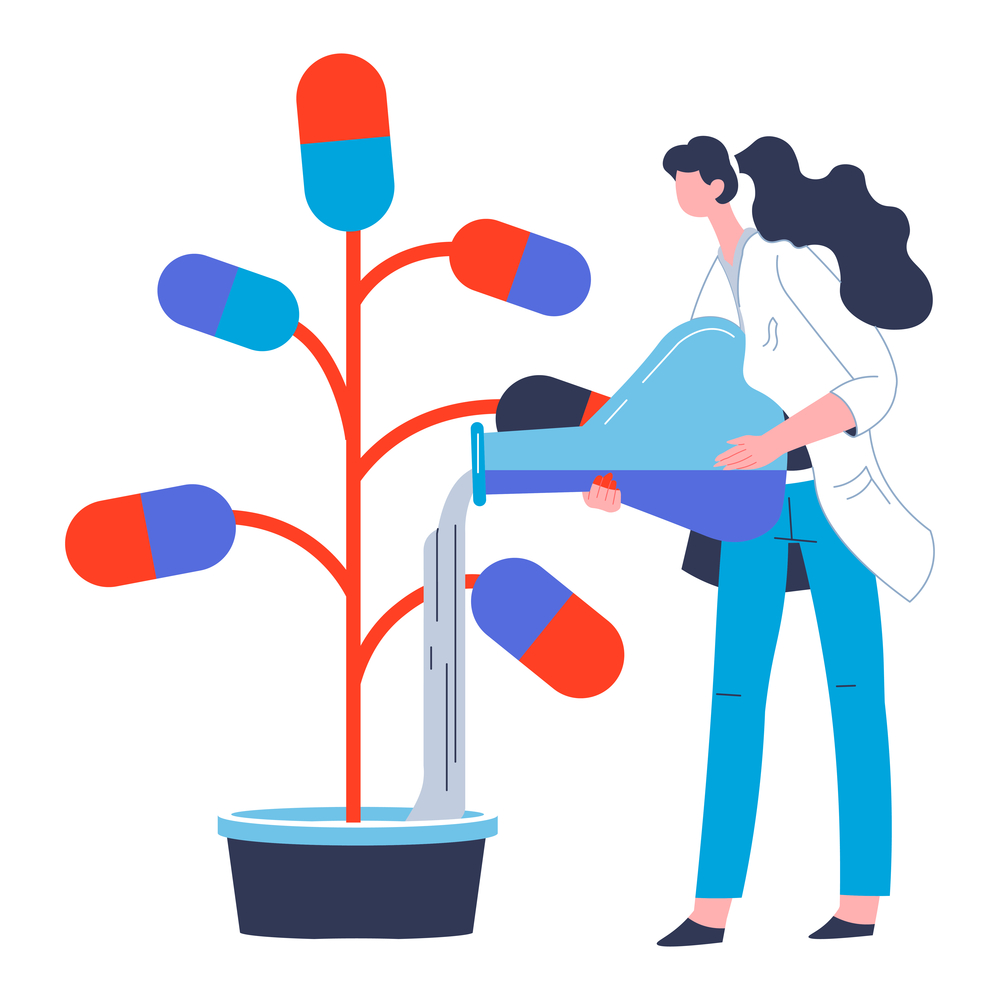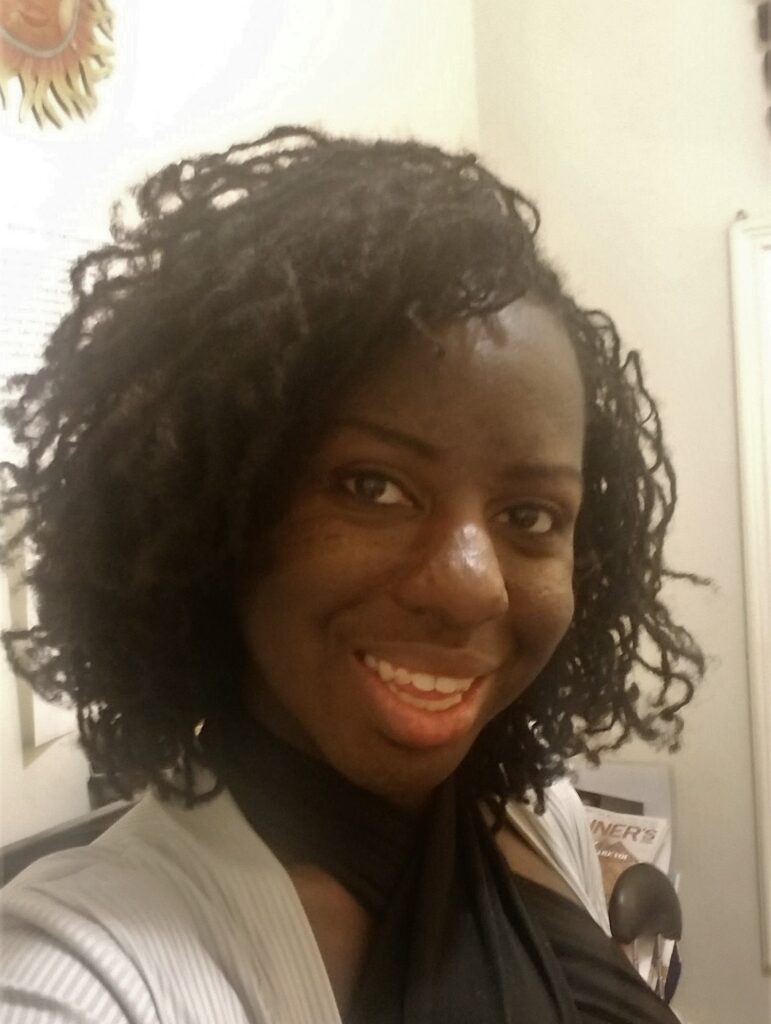Pharma’s “Evergreening” Patent Tactics Mean High Costs and Low Benefits for Consumers
“常青樹”的做法,例如對藥物進行微調,為幾乎沒有創新或患者利益的公司創造了巨額利潤。
“Evergreening” practices, like slightly tweaking drugs, create large profits for companies with little innovation or patient benefit.
措措阿布羅赫-2022 年 7 月 6 日
By Tsotso Ablorh -July 6, 2022
製藥公司從事的商業模式將利潤置於治療醫療和心理疾病的藥物的療效和可及性之上。Simran Siddalingaiah 和Adriane Fugh-Berman進行了一項研究,以量化由追求利潤的專利策略引起的通貨膨脹量。此外,它們還詳細描述了重新申請專利的技術,這些技術可以防止品牌藥的仿製藥在原專利有效期超過 20 年之後到達消費者手中。這些“常青樹”策略導致在沒有創新的情況下在藥物研究上不必要的高支出,以及消費者價格上漲超過 300%。
Pharmaceutical companies engage in business models prioritizing profit over efficacy and accessibility of drugs treating medical and psychological conditions. Simran Siddalingaiah and Adriane Fugh‐Berman conducted a study to quantify the amount of inflation caused by profit-seeking patent tactics. In addition, they provide detailed descriptions of re-patenting techniques that prevent generic versions of brand-name drugs from reaching consumers well beyond the 20 years an original patent lasts. These “evergreening” tactics result in unnecessarily high spending on pharmaceutical research without innovation and over 300% increases in prices for consumers.
“專利延期策略增加了藥物成本,而對患者幾乎沒有額外的好處。配方或劑量的微小改變可能不會提供臨床益處。與可以在提供同等護理標準的同時節省資金的同等仿製藥相比,許多 FDC 價格昂貴,並且無法在臨床結果方面提供成本合理的改進,”作者寫道。“應該控制常青策略,因為它們對醫療保健系統和患者來說是一筆巨大的成本。”
“Patent extension tactics increase drug costs while providing little additional benefit to patients. Minor alterations in formulations or dosing may provide no clinical benefits. Many FDCs are expensive and fail to provide cost-justified improvements in clinical outcomes, compared to equivalent generic drugs that would save money while delivering an equal standard of care,” the authors write. “Evergreening tactics should be reined in, as they represent a significant cost to the healthcare system and to patients.”

儘管美國的處方藥支出估計每年超過 3000 億美元,但其中大部分支出不是用於新藥的開發,而是用於現有品牌藥物的略有不同的迭代和組合。新藥專利持續 20 年,其中包括對人體進行測試的時間。這使得該藥物獲得專利和上市大約需要 12-14 年。此外,製藥公司可以出於多種原因申請專利,從而延長現有藥物專利的使用壽命:藥物配方(即速釋與緩釋)、製造方法、劑量的微小變化、添加特定成分(活性成分、防腐劑、鹽等),每種給藥形式(即口服、吸入、局部等),
Although prescription drug spending in the US is estimated to be over $300 billion per year, a large amount of this spending is not on the development of new drugs but on slightly different iterations and combinations of existing branded drugs. New drug patents last 20 years, including time for testing on humans. This leaves approximately 12-14 years in which the drug is patented and on the market. In addition, drug companies can file patents for a variety of reasons that add years to the life of an existing drug’s patent: drug formulations (i.e., immediate- vs. extended-release), manufacturing methods, minor changes in dosing, the addition of specific ingredients (active ingredients, preservatives, salts, etc.), each form drug administration (i.e., oral, inhaled, topical, etc.), and “new use” (additional conditions or purposes for which a drug can be used).
Siddalingaiah 和 Fugh-Berman 描述了公司用來增加利潤而不開發新藥並且經常不為消費者提供任何額外醫療福利的常見策略。“長青化”是指公司延長品牌藥物專利期限的策略,否則這些品牌藥物將面臨仿製藥競爭。這包括為現有藥物的小幅增量變化申請新專利。
Siddalingaiah and Fugh-Berman describe common tactics companies use to increase their profits without developing novel drugs and frequently without providing any additional medical benefit to consumers. ‘Evergreening’ refers to tactics by which companies extend the life of patents for branded drugs that would otherwise face generic competition. This includes applying for new patents for small, incremental changes to existing drugs.
“產品跳躍”是常青化的一個子集,是指公司停止使用具有舊專利或即將到期專利的藥物,以迫使消費者轉向與舊藥幾乎相同的“新”藥物。這讓消費者在舊藥的仿製藥上市之前就已經習慣了“新”藥。
“Product hopping,” a subset of evergreening, is when companies discontinue drugs with old or soon-to-expire patents to force consumers to switch to ‘new’ drugs that are nearly identical to the old ones. This gets consumers used to the ‘new’ drug before a generic version of the older drug can come onto the market.
“例如,就在 Suboxone(丁丙諾啡,用於治療阿片類藥物使用障礙)的專利到期之前,Indivior Inc. 逐步淘汰了片劑形式,迫使患者改用新獲得專利的舌下膜。這通過縮小藥片市場而使仿製藥競爭對手停滯不前,迫使仿製藥製造商重新設計他們的產品和市場進入戰略。”
“For example, just before expiration of the patent on Suboxone (buprenorphine, used to treat opioid use disorder), Indivior Inc. phased out the tablet form, forcing patients to switch to the newly patented sublingual film. This stalled generic competitors by diminishing the market for tablets, forcing generic manufacturers to re‐engineer their product and market entry strategy.”
第三種常見策略涉及發布具有奇數增量或不同劑量定價的新藥。例如,作者寫道,“Augmentin 的最低劑量,一種結合了阿莫西林和克拉維酸的抗生素,含有 250 毫克阿莫西林,價格是 875 毫克形式的兩倍。最高和最低劑量變化比含有 500 毫克阿莫西林的中間劑量更昂貴。” 這種做法可以防止開處方者將更便宜的藥物劑量增加一倍或減半,以降低患者的成本。
A third common tactic involves releasing new drugs with odd increments or pricing for different dosages. For example, the authors write, “the lowest dose of Augmentin, an antibiotic that combines amoxicillin and clavulanate, contains 250 mg of amoxicillin and is priced twice as high as the 875 mg form. The highest and lowest dose variations are more expensive than the intermediate dosage, which has 500 mg amoxicillin.” This practice prevents prescribers from doubling or halving cheaper dosages of a drug to reduce costs for their patients.
最後,作者討論了涉及固定劑量組合 (FDC) 的常青策略。FDC是兩種或多種藥物以一組劑量比組合。這可以包括兩種仿製藥的組合,然後根據一項專利進行品牌化。
Lastly, the authors discuss the evergreening tactics involving fixed-dose combinations (FDCs). FDCs are two or more drugs combined in one set dosage ratio. This can include combinations of two generic drugs that are then branded under one patent.
許多這些做法表面上對患者沒有好處,並且經常造成額外的傷害。例如,Aricept(多奈哌齊),一種最初以 10 毫克劑量上市的癡呆症藥物,後來以 23 毫克劑量推出,沒有提供額外的醫療益處,但副作用增加了三倍,成本增加了十倍。
Many of these practices have ostensibly no benefit for patients and frequently cause additional harm. As an example, Aricept (donepezil), a dementia drug marketed initially in 10mg dosages, was later released at a 23mg dosage that provides no additional medical benefit but has three times more negative side effects and ten times the cost.
公司有時會獲得新專利,將現有藥物應用於 Siddalingaiah 和 Fugh-Berman 所說的“看似發明的疾病(seemingly invented diseases)”;例如,經前焦慮症和睫毛少毛症(一種涉及主觀“睫毛量不足”的“疾病”)。然而,這兩種假設條件都沒有一致的經驗支持它們的存在。
Companies sometimes obtain new patents to apply existing drugs to what Siddalingaiah and Fugh-Berman refer to as “seemingly invented diseases,”; for instance, Premenstrual Dysphoric Disorder and eyelash hypotrichosis (a “disease” involving a subjective “inadequate amount of eyelashes”). However, both supposed conditions have no consistent empirical support for their existence.
FDC 增加了購買想要其中一種藥物的患者的可能性。雖然這對公司來說意味著更多的利潤,但對患者來說也有一些不利因素。當患者出現不良反應時,很難判斷是哪種藥物傷害了他們。
FDCs increase the likelihood of patients buying them who want one of the individual medications. While this means more profits for companies, there are several downsides for patients. When patients have adverse reactions, it can be difficult to tell which drug harmed them.
製藥公司通過建議患者在涉及多種藥丸時不會遵守規定的使用來捍衛諸如創建 FDC 和改變劑量的做法。然而,Mayo Clinic 的一項研究發現,藥丸的複雜性與對處方使用的依從性之間沒有關係。世界衛生組織發現許多其他系統性因素是導致患者依從性不足的重要原因;缺乏負擔能力和藥物獲取、患者因素(即記憶力或認知功能差、對藥物的信念)以及醫療保健系統和提供者在溝通和提供獲取方面的問題。
Pharmaceutical companies defend practices like the creation of FDCs and changes in dosage by suggesting patients will not adhere to their prescribed use when multiple pills are involved. However, a Mayo Clinic study found no relation between the complexity of pills and adherence to prescribed usage. The World Health Organization found many other systemic factors contribute significantly to the lack of patient adherence; lack of affordability and access to drugs, patient factors (i.e., poor memory or cognitive function, beliefs about medication), and health care system and provider issues in communication and provision of access.
除了讓人們了解追逐利潤的常青策略外,Siddalingaiah 和 Fugh-Berman 還對多個品牌藥品及其仿製藥進行了價格分析。還比較了 FDC 與單一藥物藥丸的活性成分與藥丸價格的比率。價格來自 GoodRx.com 和兩個批發連鎖經銷商。
In addition to giving visibility to profit-chasing evergreening tactics, Siddalingaiah and Fugh-Berman’s conducted a price analysis of multiple branded pharmaceutical drugs and their generic equivalents. The ratio of active ingredients to the price of the pill was also compared for FDCs versus single-medication pills. Prices were collected from GoodRx.com and two wholesale chain distributors.
“品牌固定劑量組合的成本通常遠高於其單個成分。將二甲雙胍與其他藥物結合使用的 FDC 是一個例外,其成本通常與非二甲雙胍成分相同。”
“Branded fixed‐dose combinations generally cost far more than their individual constituents. FDCs that combine metformin with other drugs are an exception, often costing the same as the non‐metformin component.”
在將 FDC 的價格與其所含的單個藥物的價格進行比較時,研究人員發現,對於十分之九的常見藥物,FDC 的成本至少比其單個仿製藥成分高出 364%。最膨脹的 FDC,Duexis,其成本比其通用組件高出 3534%。此外,Siddalingaiah 和 Fugh-Berman 提供了一些公司的例子,其中包括產品標籤警告不要用其仿製藥成分替代品牌藥物,儘管有證據表明更便宜的仿製藥同樣有效。
When comparing the prices of FDCs to the prices of the individual medications they contain, the researchers found that for nine out of ten common drugs, FDCs cost at least 364% more than their individual generic components. The most inflated FDC, Duexis, costs 3534% more than its generic components. Furthermore, Siddalingaiah and Fugh-Berman provide examples of companies that included product label warnings not to substitute the branded drug with its generic components, despite evidence that the cheaper, generic drugs are just as effective.
本研究提供了有關製藥公司以犧牲消費者利益為代價操縱專利法的性質和程度的重要信息,並且在獲得理想的品牌名稱和仿製藥方面考慮社會經濟差異至關重要。例如,需求較高的藥物(由於較高的療效或較低的副作用)經常在高收入和低收入社區之間以不同的方式分佈,即使在同一州內也是如此。有關獲得更便宜的通用等價物的相關信息將有助於了解專利策略對低收入消費者的負面影響。
This study provides important information about the nature and degree to which pharmaceutical companies manipulate patent law at the expense of consumers, and it is crucial to consider socioeconomic differences in access to the desirable brand name and generic drugs. For instance, drugs in higher demand (due to higher efficacy or lower side effects) are frequently distributed differently across higher and lower-income neighborhoods even within the same state. Information about relative access to cheaper, generic equivalents would help with understanding the negative impact of patent tactics on lower-income consumers.
總之,製藥公司使用的常綠方法涉及對現有品牌藥物的劑量、配方、遞送方法和其他方面進行大量增量更改,以及創建現有仿製藥的組合。然而,這些變化和組合很少為患者提供額外的醫療益處。
In summary, evergreening methods used by pharmaceutical companies involve a large variety of incremental changes to dosage, formulation, delivery method, and other aspects of existing branded drugs, as well as creating combinations of existing generic drugs. However, these changes and combinations rarely provide additional medical benefits to patients.
作者認為,“藥品成本監管對美國醫療基礎設施至關重要”,以防止不可持續的支出增長。他們認為,儘管專利法的最初目的是促進創新,但目前專利法在沒有創新的情況下被用來製造過高的藥品價格。在 Siddalingaiah 和 Fugh-Berman 探索的可能解決方案中,他們認為試圖通過排除特定的、定價過高的藥物來控製成本太不一致而無法奏效。當被問及時,製藥公司在當前結構上的財務投資也過多,無法降低成本。
The authors argue that “drug cost regulation is critical to the US healthcare infrastructure” in order to prevent unsustainable increases in spending. They suggest that, despite its original purpose of promoting innovation, patent law is currently exploited to create exorbitant drug prices without innovation. Amongst the possible solutions Siddalingaiah and Fugh-Berman explore, they suggest that attempting to control costs by excluding specific, exorbitantly priced drugs is too inconsistent to be effective. Pharmaceutical companies are also too financially invested in the current structure to lower costs when asked.
他們得出的結論是,應賦予 FDA 和其他監管機構權力,要求僅在藥物證明對患者的安全、成本和長期結果有足夠好處時才授予額外專利。其次,應該修改專利法,以抑制製藥公司對現有藥物進行微小改動。
They conclude that the FDA and other regulatory authorities should be given the power to require that additional patents only be granted when drugs demonstrate sufficient benefits for patients’ safety, cost, and long-term outcomes. Secondly, patent laws should be changed to disincentivize pharmaceutical companies from making minor changes to existing drugs.
許多常青化的做法干擾了開藥者和藥房為患者提供低成本等價物的嘗試。一些做法,如非線性劑量變化,甚至會阻止患者獲得最有效的劑量或引入不必要的副作用或成本。幾乎同等品牌藥物的連續發布還可以通過防止所有產品經常出現的受歡迎程度的頻繁下降,從而增加公司的利潤。
Many evergreening practices interfere with prescribers and pharmacy attempts to provide patients with lower-cost equivalents. Some practices, like non-linear dosage changes, even prevent patients from getting the most effective dosages or introduce unnecessary side effects or costs. Sequential release of nearly equivalent branded drugs also increases profits for companies by preventing the frequent decline in popularity that tends to occur with all products.
然而,所有這些將專利延長幾十年的策略都阻止了醫學上等效且更便宜的仿製藥到達消費者手中。從本質上講,製藥公司可以維持對每種品牌藥物的壟斷,遠遠超過原始專利允許的 20 年。
However, all of these tactics that extend patents for several decades prevent medically equivalent and cheaper generic drugs from reaching consumers. Essentially, pharmaceutical companies can maintain monopolies over each branded drug far beyond the 20 years the original patent allows.
****
Siddalingaiah S, Fugh-Berman A. 常青藥物還是常青利潤?J 評估臨床實踐。2022 年;1-8。doi:10.1111/jep.13695 (鏈接)
Siddalingaiah S, Fugh‐Berman A. Evergreened drugs or evergreened profits? J Eval Clin Pract. 2022;1‐8. doi:10.1111/jep.13695 (Link)
文章來源:
Tsotso AblorhTsotso Ablorh is a doctoral student in Clinical Psychology at the University of Massachusetts Boston. She primarily researches improvements to culturally relevant therapeutic methods based on the experiences and needs of marginalized peoples; including methods for training therapists, decreasing therapist cultural biases, and assessing the effectiveness of therapist training.
措措阿布羅赫Tsotso Ablorh 是馬薩諸塞大學波士頓分校臨床心理學博士生。她主要研究根據邊緣化人群的經驗和需求改進與文化相關的治療方法;包括培訓治療師、減少治療師文化偏見和評估治療師培訓有效性的方法。

